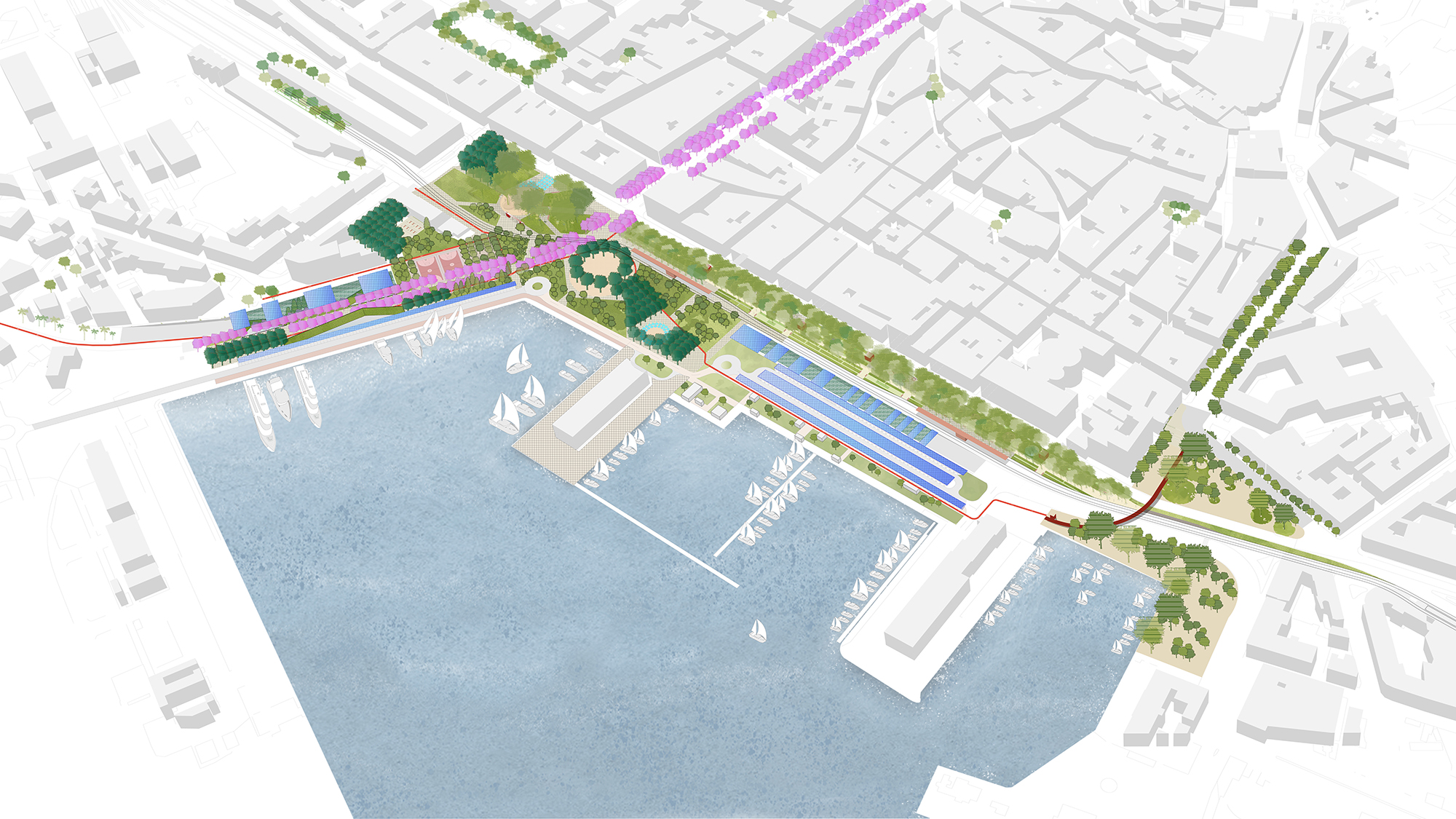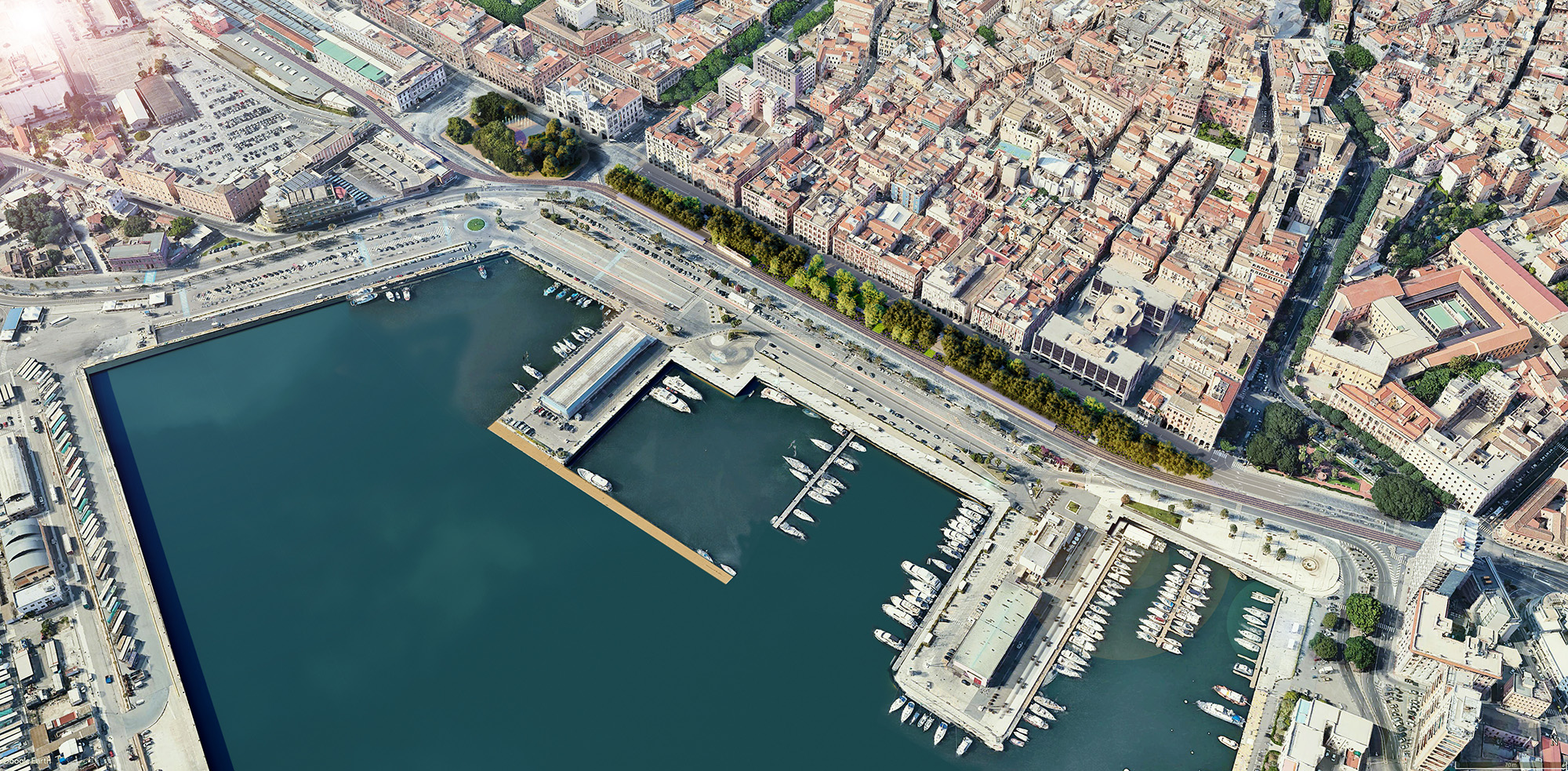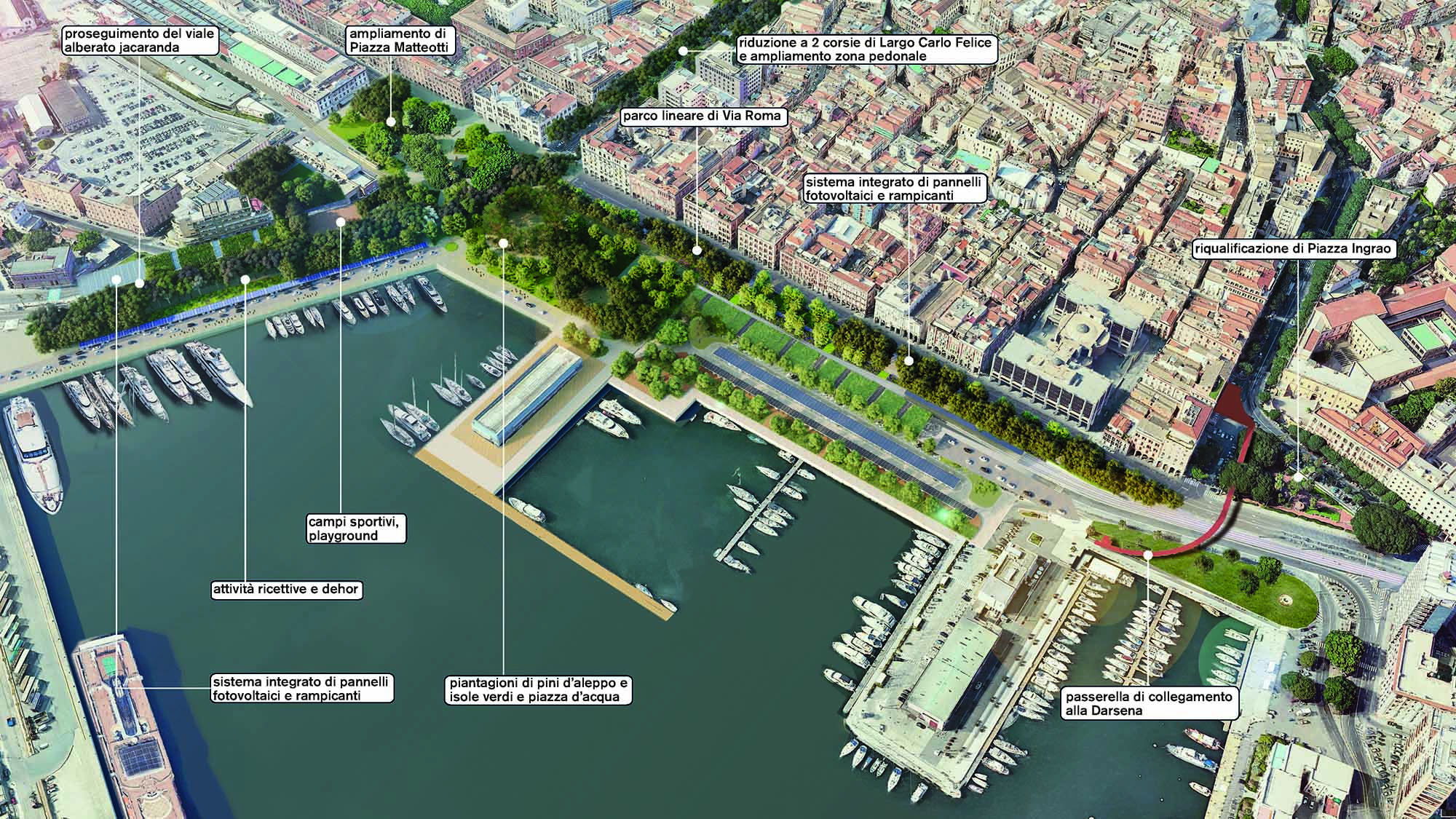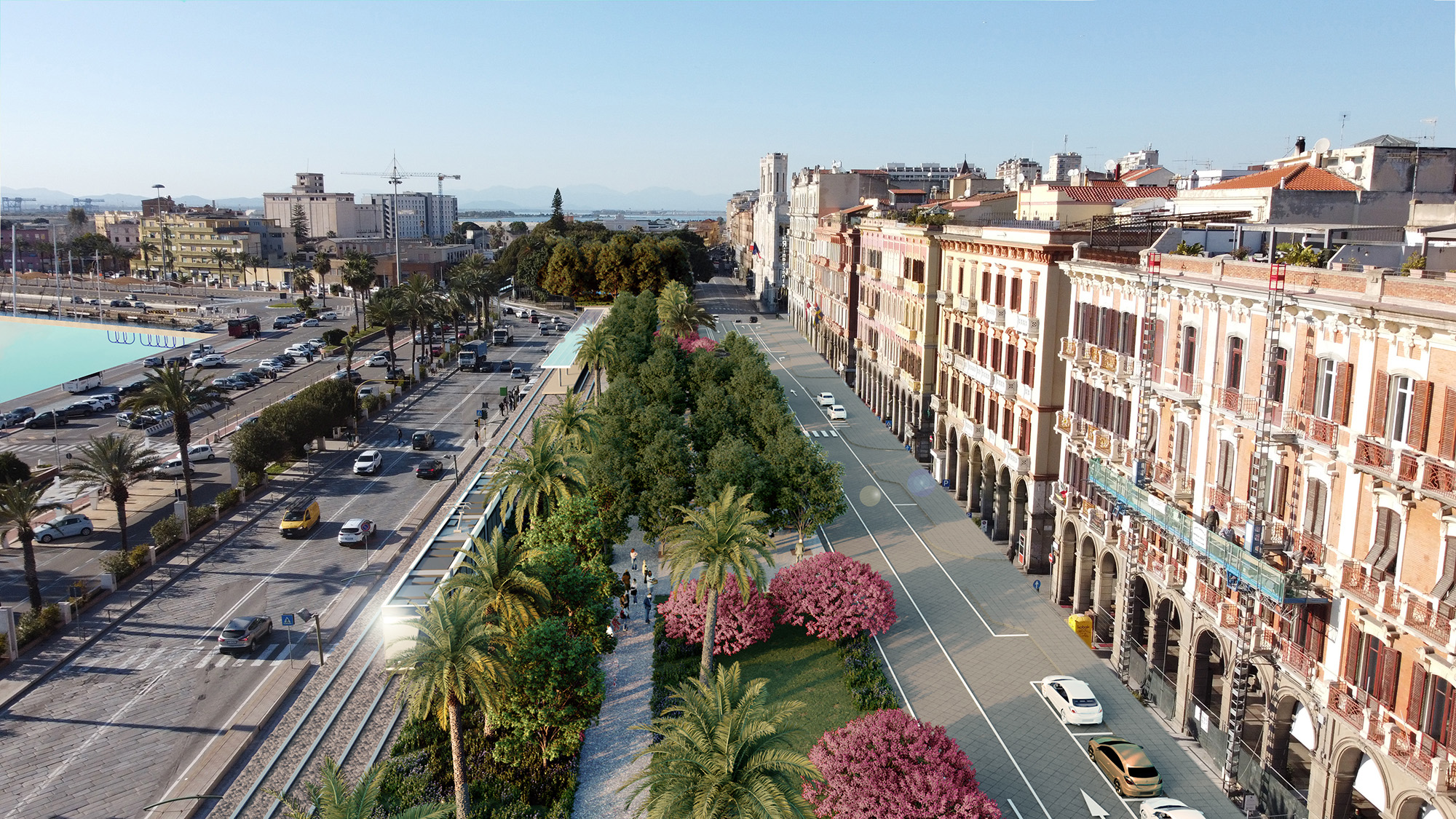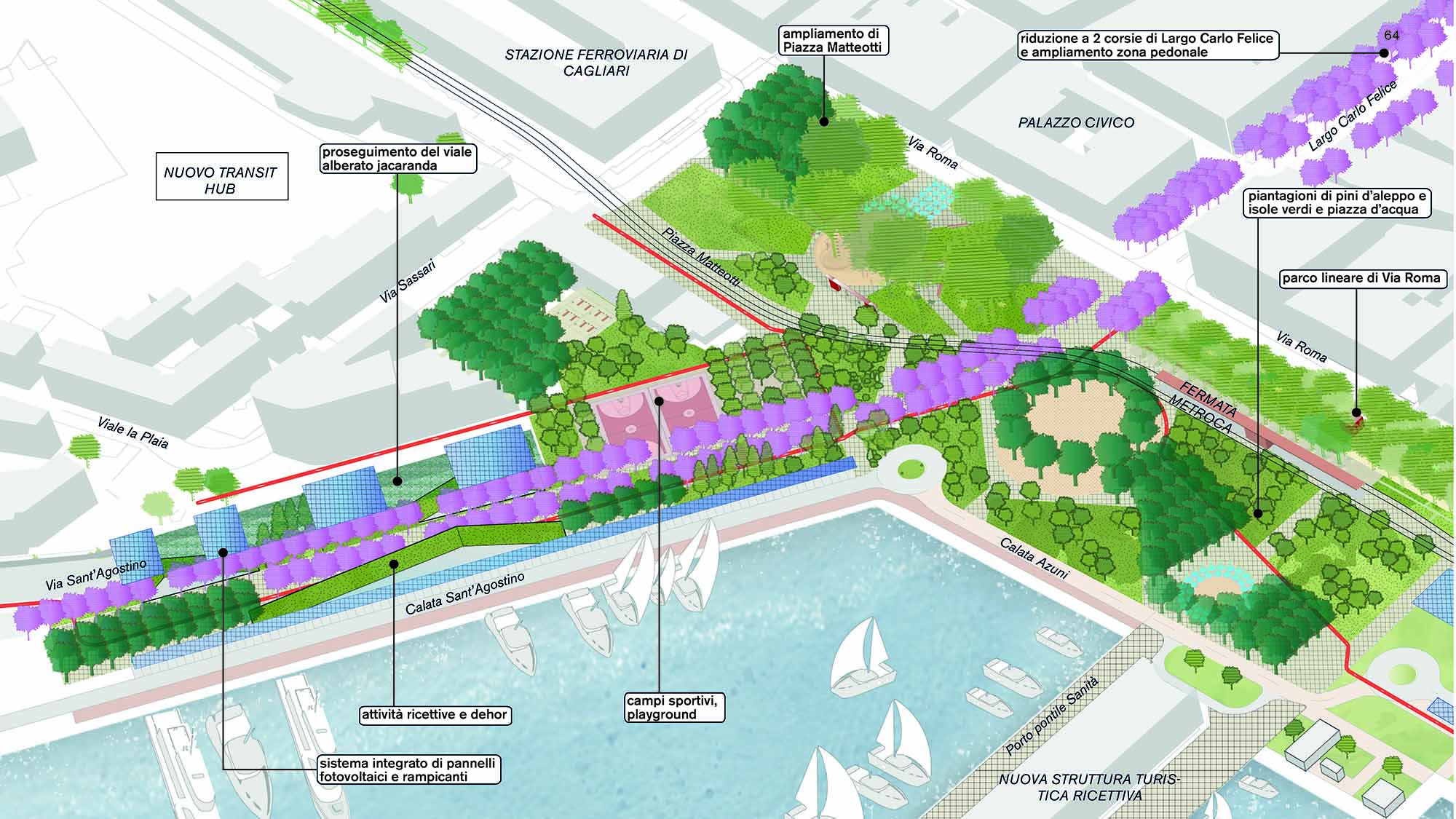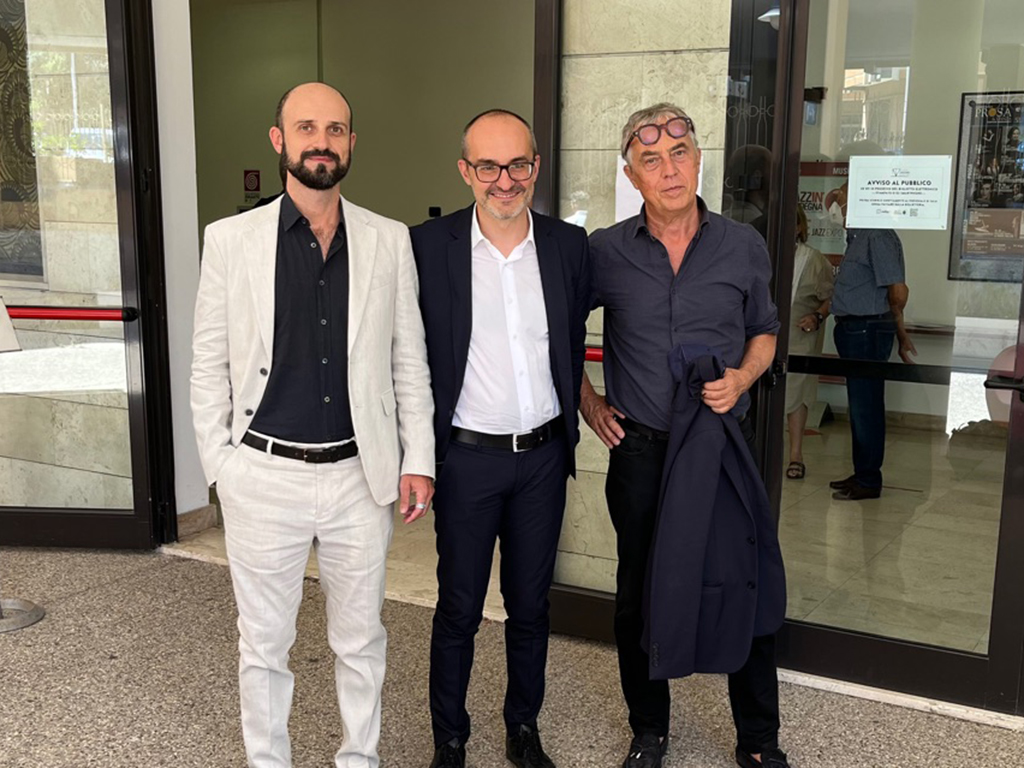A green promenade for the waterfront of Cagliari
A green promenade for Cagliari’s waterfront is the project that will transform the waterfront into a green axis, a new link between the city centre and its sea front.
The project – presented by the team of Stefano Boeri Architetti, MATE Società Cooperativa, MIC-HUB, StudioSilva, S.T.P, with the archaeologist Demis Massimiliano Murgia – envisages the refurbishment of Via Roma promenade, the waterfront and Piazza Matteotti.
Cagliari’s waterfront, structurally determined by the presence of the port and the Marina district, is characterised by a strong and progressive soil sealing – with negative effects also in terms of loss of biodiversity and the ‘heat island’ effect – and by a complex road system, which represents an obstacle between the city and the sea.
The urban and landscape project proposes to restore the social and environmental value of Cagliari’s seafront with a green promenade that restores the original 19th-century function of Via Roma. Starting from the tradition of tree-lined avenues, the project defines a continuous, pedestrian and shaded public space, a green belt and a link between the FFSS station and Piazza Ingrao and between the city and the sea.
Transportation studies have enabled us to redesign the mobility system, the project involves two lanes that will be reduced to extend the city’s public space to the sea.
In this way, the new promenade triggers the creation of a new park and open space for the city, becoming a connecting element between the waterfront and the main public functions facing it, enhancing the area by a cultural, social and environmental point of view. The project enhances the mixed use nature of the area to implement social inclusion and community cohesion, creating new epicenters of collective life.
Great relevance is given to greenery, in line with the city’s urban reforestation philosophy, to protect biodiversity, combat the effects of climate change and purify the air. The project increases the presence of greenery, capable of retaining fine dust and absorbing CO2, as well as reducing the “heat island” effect and mitigating the microclimate.
The area is located in a dynamic intermodal urban space that will act as the main gateway to the city.
The promenade project is set in the context of a potential general masterplan, which brings together the interventions and projects envisaged by the strategic and urban planning of the municipality and the Port System Authority.
In particular, the plan foresees the implementation of sustainable mobility based on pedestrian links and proximity. A network of paths will connect the green areas with the Marina district, the entire park will become an efficient urban and social connector between the urban area and the sea, recovering a relationship that was denied.
With sustainable strategies, renewable sources and sustainable mobility, the masterplan would transform the waterfront into a new public, accessible and innovative place, renewing the identity of the place.
